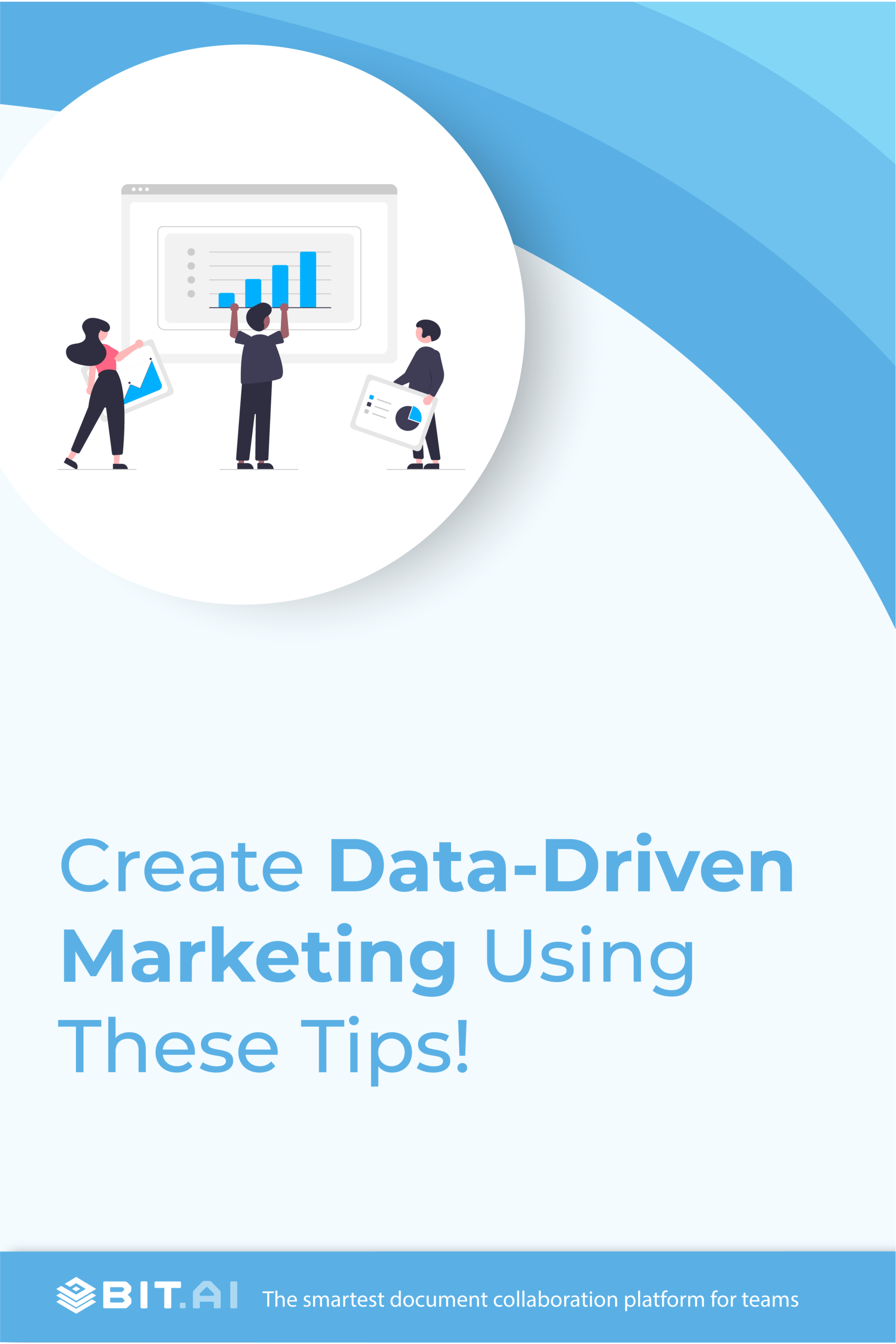Imagine being able to predict your customer’s next move and offer them the perfect product or service at the right time. That’s the power of data-driven marketing.
Gone are the days when marketing was about putting up billboards or running TV ads, hoping to reach the right audience. With the advent of technology, data-driven marketing has become the norm.
Remember the “Share a Coke” campaign that Coca-Cola ran a few years ago? The company used data to print popular names on its bottles and cans, and it turned out to be a massive hit. The campaign generated over 998 million impressions on social media, and Coca-Cola saw a 2% increase in sales after years of decline.
But data-driven marketing isn’t just about serving up ads. It can also help businesses improve their customer experience. For example, an online retailer notices customers abandoning their shopping carts at a high rate.
By analyzing the data, they might discover that the checkout process is too complicated or the shipping costs are too high. Armed with this information, the business can make changes to improve the customer experience and increase sales.
In this blog, we’ll explore the world of data-driven marketing in more detail, delving into the strategies, tools, and best practices that can help businesses unlock the power of data.
So, grab a cup of coffee, and let’s dive in!
What is Data-driven Marketing?
Data-driven marketing is a strategy that involves using customer data and insights to inform and improve marketing efforts. Marketers can gain valuable insights into their target audience’s preferences, needs, and behaviors by analyzing data from various sources, such as website analytics, customer behavior, and social media engagement.
These insights allow marketers to create more targeted and personalized marketing campaigns that resonate with their audience, resulting in higher engagement and conversion rates. Data-driven marketing involves continuously collecting and analyzing data, measuring the results, and making data-backed decisions to optimize marketing efforts.
According to a survey by Forbes, 87% of marketers use data to improve their understanding of customers, and 78% believe that data-driven marketing increases customer engagement.
Amazon is a prime example of a company successfully leveraging data-driven marketing. They can provide personalized product recommendations and offers by analyzing customer data, leading to increased sales and customer loyalty. They attribute a large portion of their success to their data-driven approach.
Now that you understand the meaning of Data-driven Marketing, let’s look at the importance!
Importance of Data-driven Marketing

Data-driven marketing is becoming increasingly popular because it has proven more effective than traditional, generalized marketing tactics.
But why is it so effective?
Here are some reasons why data-driven marketing is essential:
- Better customer insights: Data-driven marketing enables businesses to understand better their customer’s preferences, behaviors, and needs. Businesses can segment their audience by analyzing customer data, personalizing messaging, and offers, and improving the customer experience.
- Improved targeting and segmentation: Businesses can identify high-value customers and target them with tailored messaging and offers by leveraging data. This can help increase conversion rates, drive revenue growth, and reduce wasteful spending on irrelevant advertising.
- Optimization and measurement: Data-driven marketing allows businesses to test and optimize their campaigns in real time, improving performance and ROI. By tracking and analyzing key metrics, businesses can gain insights into which channels, messaging, and tactics are most effective.
- Competitive advantage: By leveraging data effectively, businesses can gain a competitive advantage over rivals that rely on intuition or less sophisticated marketing techniques.
Understanding your audience and tailoring your marketing efforts to their needs can increase profitability and build stronger customer relationships.
Benefits of Data-Driven Marketing
In today’s digital age, data is more valuable than ever, and savvy marketers use it to gain a competitive edge and drive better results. Let’s look at some of the benefits of Data-Driven Marketing:
- Better targeting: With data-driven marketing, you can target specific audiences with personalized messages and offers. By analyzing customer data, you can segment your audience based on their demographics, behavior, and preferences and deliver targeted campaigns that resonate with them.
- Increased ROI: Using data to optimize your campaigns can improve your marketing ROI. By tracking key metrics such as click-through rates, conversion rates, and customer lifetime value, you can identify the most effective marketing channels and campaigns and adjust your strategy accordingly.
- Better decision-making: Data-driven marketing enables you to make informed decisions based on facts and data, rather than assumptions or guesswork. By analyzing customer data, you can identify trends and patterns that help you make strategic decisions about your marketing strategy.
- Enhanced customer experience: Data-driven marketing can help you deliver a more personalized and relevant experience to your customers. By tailoring your messaging and offers to their preferences and behavior, you can create a more engaging and satisfying customer experience.
- Improved brand loyalty: Data-driven marketing can help you build stronger customer relationships. Delivering personalized and relevant messaging can enhance customer satisfaction and loyalty, leading to increased repeat business and brand advocacy.
While data-driven marketing offers many benefits, it’s not without its challenges. Let’s take a closer look at some of the potential obstacles companies may face when implementing data-driven marketing strategies.
Challenges of Data-Driven Marketing
Data-driven marketing has become an essential part of modern marketing practices. It enables businesses to make informed targeting, messaging, and optimization decisions. However, data-driven marketing also presents various challenges businesses must overcome to maximize their data.
Here are some of the top challenges and solutions for data-driven marketing:
Challenge 1: Data Overload
One of the biggest challenges of data-driven marketing is dealing with data overload. As businesses collect more and more data, it can become overwhelming to manage and analyze it all.
Industry estimates suggest that enterprise data volume is expected to grow by 2-3 times by 2025, indicating a significant increase in the data businesses must manage. This demonstrates that the challenge of data overload is likely to persist and become even more pronounced in the coming years.
Solution: Prioritize Data That Matters
To overcome this challenge, businesses must prioritize the data that matters most. Rather than trying to analyze every piece of data, businesses should focus on the data that is most relevant to their marketing goals. By prioritizing data, businesses can focus their efforts on actionable insights and make more informed decisions.
Challenge 2: Data Quality
Another challenge of data-driven marketing is data quality. Incomplete, inaccurate, or outdated data can lead to incorrect conclusions and ineffective marketing strategies.
According to a recent study, businesses believe that 32% of their data is inaccurate.
Solution: Regularly Audit and Cleanse Data
To overcome this challenge, businesses must regularly audit and cleanse their data. This involves identifying and removing duplicate or outdated data, as well as verifying the accuracy of the data that is being used. Businesses can make more informed decisions and avoid wasted marketing spend by ensuring data quality.
Challenge 3: Privacy and Security Concerns

With the rise of data-driven marketing, privacy, and security concerns have become a significant challenge. Consumers are becoming more aware of how their data is collected and used, and businesses need to ensure that they are transparent and ethical in their data practices.
Solution: Be Transparent and Ethical
To overcome this challenge, businesses must be transparent and ethical in their data practices. This means providing clear privacy policies and opt-in procedures and protecting customer data from unauthorized access or breaches. By being transparent and ethical, businesses can build trust with their customers and avoid damaging their reputations.
Challenge 4: Lack of Expertise and Resources
Finally, one of the challenges of data-driven marketing is a lack of expertise and resources. Data analysis and management require specialized skills and resources, which can be difficult for businesses to manage in-house.
Solution: Hire Experts or Outsource Data Management
To overcome this challenge, businesses can hire data analysis and management experts or outsource these tasks to third-party providers. This can help businesses to ensure that they are making the most of their data and making informed decisions based on actionable insights.
In conclusion, data-driven marketing presents a range of challenges, but there are solutions that businesses can implement to overcome them.
Businesses can maximize their data and achieve better results from their marketing efforts by prioritizing data, ensuring data quality, being transparent and ethical, and hiring experts or outsourcing data management.
Now that we’ve explored the challenges of data-driven marketing, let’s turn our attention to how businesses can create effective strategies that use data insights.
Creating Data-Driven Marketing Strategies
Marketing has become more complex and competitive in today’s fast-paced business environment. To stay ahead of the curve, businesses must turn to data to drive their marketing strategies.
But how do you go about creating a data-driven marketing strategy? Read ahead to find out.
Step 1: Set Objectives
When it comes to data-driven marketing, one of the most crucial steps is to set clear and specific objectives for your campaign. Without clear goals, knowing whether your efforts are effective is impossible.
In fact, according to a survey by Ascend2, 53% of marketers cite a lack of clear objectives as the biggest obstacle to achieving success with their data-driven marketing campaigns. That’s why it’s essential to set objectives that are measurable, achievable, and aligned with your overall business goals.
For example, if your goal is to increase website traffic, you could set a specific target, such as a 20% increase over the next six months. This objective is measurable, achievable, and aligned with your overall business goal of increasing your online presence.
When setting objectives, it’s important to remember that data-driven marketing is an iterative process. You may need to adjust your objectives as you collect more data and learn more about what works and what doesn’t.
Setting clear objectives is a critical step in creating effective data-driven marketing strategies. By doing so, you’ll be able to measure the success of your campaign and make adjustments as needed to achieve your overall business goals.
Step 2: Collect the Data
Data-driven marketing has become increasingly popular over the years and for good reason.
So, what kind of data should you be collecting?
It depends on your business and your goals. But some common data types include customer demographics, website analytics, social media engagement, and sales data.
Let’s say you’re a small business owner looking to increase sales. You might start by collecting data on your current customers – their age, gender, location, and buying habits. You could also look at your website analytics to see where your traffic is coming from and what pages are most popular. By analyzing this data, you might find that many of your customers are millennials active on social media. This could lead you to develop a social media marketing campaign targeting that demographic.
But collecting data is just the second step. The magic happens when you use that data to inform your marketing strategies. By analyzing the data and identifying patterns and trends, you can decide where to allocate your marketing budget and which tactics will most likely resonate with your target audience.
In conclusion, collecting data is essential to creating a successful marketing strategy. It can help you make informed decisions, identify new opportunities, and drive business growth. So, don’t overlook the importance of data in your marketing efforts – it could be the key to your success!
Step 3: Organize the Data
If you want to create data-driven marketing strategies, you’ve come to the right place. Data is king today, and utilizing it effectively can be the key to success.
According to a recent survey, only 26% of marketers feel confident using customer data effectively. That’s a startlingly low number, especially considering how much data we have.
But with a few simple steps, you can organize your data to make it easy to use and understand. First, start by identifying the key metrics you want to track. This could include website traffic, conversion rates, and customer engagement.
Next, make sure you’re collecting the right data. This could include customer demographics, purchase history, and social media interactions. By gathering this information, you’ll be able to understand your audience better and tailor your marketing efforts accordingly.
Now, let’s look at a real-life example. Let’s say you run an e-commerce store that sells clothing. You might notice that a clothing category is underperforming by tracking metrics like website traffic and conversion rates. By digging deeper and analyzing customer data, you might find that this category doesn’t appeal to your target demographic. Armed with this information, you can adjust your marketing strategy and focus on promoting products that your audience is more likely to purchase.
Finally, it’s important to make sure your data is easily accessible and understandable. Consider using data visualization tools to create easy-to-read charts and graphs, or invest in a customer relationship management (CRM) system to help you track customer interactions.
In conclusion, organizing your data is crucial in creating effective data-driven marketing strategies. By identifying key metrics, collecting the right data, and making it easily accessible, you can gain valuable insights into your audience and tailor your marketing efforts accordingly. So, what are you waiting for? Let’s organize and use data to take your marketing to the next level!
Step 4: Build a Strong Team

Building a strong team is a crucial part of the process because, without the right people, your data-driven marketing efforts can fall flat.
So, what makes a strong data-driven marketing team?
First and foremost, you need people who are comfortable with data. They should be able to analyze data, draw insights from it, and use those insights to inform marketing decisions. That doesn’t necessarily mean that everyone on your team needs to be a data scientist, but they should all have a basic understanding of data analysis and be willing to learn more.
You also need people who are creative. Data-driven marketing is all about using data to inform your creative decisions, so you need people who can turn that data into compelling marketing campaigns. They should be able to think outside the box and come up with fresh, innovative ideas that will resonate with your target audience.
Finally, you need people who are collaborative. Data-driven marketing requires input from multiple stakeholders, including data analysts, marketers, and executives. Your team should be able to work together effectively, sharing insights and ideas to create a cohesive marketing strategy.
So, how do you go about building a strong data-driven marketing team?
First, you need to identify the skills you’re looking for and create job descriptions that reflect those skills. You should also be willing to invest in training and development to help your team members grow and learn new skills. Finally, you should foster a culture of collaboration and encourage your team members to share their ideas and insights with one another.
In conclusion, building a strong data-driven marketing team is crucial to succeed in today’s competitive business environment. By investing in the right people, you can create marketing campaigns that are effective but also engaging and memorable.
Step 5: Measure the Process
Let’s talk about something critical for any marketing campaign’s success – measuring the process. After all, how can you improve your marketing efforts if you don’t know what’s working and what’s not?
Measuring the process means tracking the performance of your marketing campaigns and using that data to make informed decisions about what’s working and what’s not.
Let’s take a real-life example. Say you’re running a social media campaign for a new product launch. You’re posting on Facebook, Twitter, and Instagram and using different messaging and images on each platform. How do you know which platform is driving the most engagement and which messaging is resonating with your audience?
This is where measuring the process comes in. You can use analytics tools to track metrics like engagement, click-through, and conversion rates. By analyzing this data, you can see which platforms perform best and which messages get the most traction.
But it’s not just about tracking metrics. You also need to make sense of the data you’re collecting. For example, if your engagement rate is high on Instagram but your conversion rate is low, you might need to re-evaluate your messaging to ensure it’s clear and compelling.
Another thing to remember is that measuring the process isn’t a one-time thing. You need to be constantly tracking and analyzing your data so that you can make adjustments as needed. This means setting up regular reporting and analysis processes so that you can stay on top of your marketing performance.
In conclusion, measuring the process is critical to any data-driven marketing strategy.
Now that we’ve covered the basics of creating data-driven marketing strategies let’s dive into some best practices to ensure success.
Data-Driven Marketing Best Practices
Data-driven marketing is the process of using data and analytics to guide marketing decisions and improve performance. Following some best practices is important for implementing a data-driven marketing approach. Here are some of the most important ones:
- Start with a clear understanding of your goals: Before you begin any data-driven marketing initiatives, make sure you clearly understand what you want to achieve. This could be anything from increasing website traffic to boosting sales or improving customer satisfaction. Whatever your goals are, make sure they are specific, measurable, achievable, relevant, and time-bound (SMART).
- Collect and analyze data: The success of data-driven marketing depends on the quality of data collected and analyzed. Ensure you have a system to collect relevant data from various sources, such as website analytics, social media platforms, and customer feedback. Use data analysis tools to extract meaningful insights from the data and use those insights to make informed marketing decisions.
- Use personalization: One of the main benefits of data-driven marketing is the ability to personalize the customer experience. Use the insights gained from data analysis to personalize your marketing messages, offers, and experiences based on customer preferences, behavior, and interests.
- Embrace automation: Automation is key to implementing a successful data-driven marketing strategy. Use marketing automation tools to automate repetitive tasks like email marketing, social media posting, and lead nurturing. This saves time and ensures that your marketing efforts are consistent and effective.
- Test and optimize: Data-driven marketing is an ongoing process. Continuously test and optimize your marketing campaigns to improve performance. Use A/B testing to experiment with marketing messages, offers, and channels to determine what works best for your target audience.
By following these best practices, you can create an effective data-driven marketing strategy that helps you achieve your business goals and improve performance over time. Remember, data-driven marketing is an ongoing process, so be prepared to adapt and adjust your strategy as needed to stay ahead of the curve.
Examples of Data-Driven Marketing
Data-driven marketing is all about using insights from data to make better marketing decisions. There are many examples of data-driven marketing; here are a few:
- Personalized Email Campaigns: By analyzing customer data, businesses can send personalized email campaigns that cater to the interests and needs of individual customers. For example, a sports retailer might send personalized emails featuring products related to a customer’s favorite sport or team.
- Retargeting Ads: Retargeting is a form of online advertising that uses customer data to display targeted ads to people who have already interacted with a business. For example, a customer who has recently visited a retailer’s website might see retargeting ads featuring products they previously viewed or added to their cart.
- Dynamic Website Content: Dynamic website content refers to web pages that change in real-time based on customer data. For example, a travel website might display different offers or promotions to customers based on their location, search history, or previous bookings.
- Social Media Advertising: Social media platforms such as Facebook and Instagram allow businesses to target specific audiences based on demographics, interests, and behaviors. Businesses can use data to create targeted ads to reach their ideal customers and improve their return on investment.
- Predictive Analytics: Predictive analytics uses machine learning and other statistical techniques to analyze customer data and predict future behavior. For example, a business might use predictive analytics to identify which customers are most likely to purchase and then target those customers with personalized marketing messages.
These are just a few examples of data-driven marketing, and there are many other ways businesses can use data to improve their marketing efforts and drive better results. The key is to use data to gain insights into customer behavior and preferences and then use those insights to create more effective marketing campaigns.
Conclusion
Well, there you have it – data-driven marketing is a force to be reckoned with in advertising and business. By harnessing the power of data, companies can gain deeper insights into their customers and make more informed decisions about engaging with them. From personalized emails to targeted social media ads, data-driven marketing is all about using the information available to us to create better, more effective marketing strategies.
And the best part?
Anyone can get in on the action. Thanks to online data, even small businesses can use data-driven marketing techniques to reach new customers and build their brands. So why not give it a try? Who knows – with some data and creativity, you might be able to take your marketing efforts to the next level.
Further Reads:
How To Market To Gen Z The Right Way in 2023?
Marketing Report: Definition, Types, Benefits & Things to Include!
Saas Marketing: Definition, Funnel and Comprehensive Strategies!
What is a Marketing Plan & How to Create One for Your Business?
Growth Marketing: What is it & How to Carry it out for your Business?
Guerrilla Marketing: What is it and How to Use it For Marketing!


